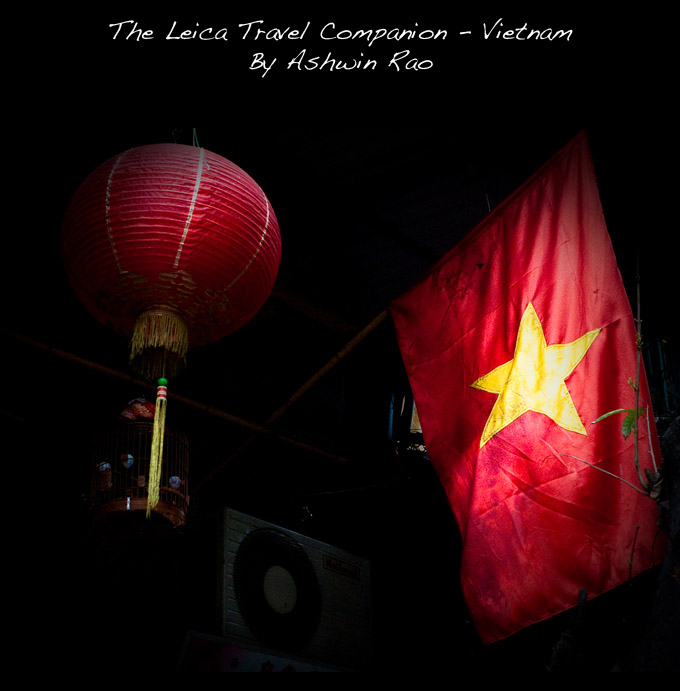
I am pleased to present another superb article written by Ashwin Rao! This one is loaded with some really inspiring photographs and great writing and is being presented in two parts. Thanks Ashwin!
Part two is now up HERE.
Steve
The Leica Travel Companion – Vietnam by Ashwin Rao
Part 1 of 2
Destination: Vietnam
Date: Feburary, 2009
Tools: Leica M8 and Leica D-Lux 4
Itinerary:
Day 1-2: Saignon (Ho-Chi Minh City)
Day 3-4: The Mekong Delta
Day 5-7: Fly to Danang, travel by taxi to Hoi An and the clothier markets
Day 6: My Son Hindu Temple Ruins
Day 8: Coastal Drive along China Beach to Hue
Day 9: Hue Masoleums
Day 10: Hue Imperial City and Citadel – Walking Tour
Day 11-13: Amazing Hanoi
Day 14-16: Magestic Halong Bay
Day 17: Back to Saigon and Homeward Bound
Hello everyone, it’s been a while since I have written for Steve’s site, and I wanted to share another of my travel experiences with a Leica M set up. In February of 2009, a good friend and I met up for a 2 week trip to Vietnam. Our goal: to explore and see the country on our own, NOT through guides or week-long organized tours, but through measured planning and the use of the internet, the knowledge of locals and Lonely Planet. Truth be told, my friend Andrea is an amazing trip planner, and she organized much of the trip’s itinerary. It’s good to have friends with skills!
Separately, my goal for the trip was to capture Vietnam photographically in a way that I would always remember. In other words, I wanted my photographs to take me back there when I looked upon them again, years later. Well, it’s been a year since that trip, and as I look upon the images here, I find myself smiling at my recollections of that wonderful trip. My hope was for my photography to reflect what I saw and how I felt when seeing it, and the Leica M system is an exceptionally adept tool to accomplish this goal. My goal for this article is to show you this.
For the trip, I used the following set-up
- Leica M8 (chrome) with Tim Isaac’s Thumb’s-Up Grip
- Summicron 35 mm f/2 Asph
- Leica Summilux 50 f/1.4 pre-asph
- Leica 90 f/2.8 Elmarit
- Leica D-Lux 4
- Billingham Pola Bag to carry the Leica M8
- Microfiber cloths: needed to wipe down equipment: It’s humid in Vietnam
Leica M8: Burning the incense
I brought along a Leica D-Lux 4, which was recently purchased at the time, anticipating that I may be using this camera as a back up. Truth be told, I shot essentially an equal number of shots with the M8 and the D-Lux 4, convincing me that having a compact camera for shooting discreetly can be equal parts rewarding and satisfying. If found that while I counted on my M8 to be the work horse for important pictures, there were times where even an M system could make my presence to conspicuous. In comparison, the D-Lux 4, an extraordinarily versatile and capable camera and was nearly invisible, even when I was shooting. I could approach subjects in a manner that allowed my photography to be invisible. I found the pairing of the M8 and D-Lux 4 to be quite natural. I also captured interestingly, equal numbers of “keeper” images from both cameras, and in fact, I have a show at a local international medical clinic comprised of images taken solely with the D-Lux 4!
Leica D-Lux 4: Vietnam’s Ace Hardware?
Most of my prior feelings on using the Leica M8 and M9 for travel have been documented in a prior article on Steve’s site. However, it’s important that you take the tools that you have and develop a style with which you are comfortable. This will allow you to capture images that are meaningful to you. My travel partner brought along one camera, the Canon G10, and composed beautiful images with a small, compact, powerful set up. It’s all about using what you have and using it well. Obvious, as a rangefinder enthusiast, I found that using the Leica M8 while in Vietnam allowed me creative flexibility, and surprisingly, the D-Lux 4 added to this experience.
Vietnam is a fascinating country of great diversity, wonderful people, and great culture…oh, and the food, the food is amazing. If you are a “Foodie”, this is THE country to visit. I believe Anthony Bourdain, of “No Reservations” and “Kitchen Confidential” fame, would count this as one of his favorite countries to visit from a culinary standpoint, and I for one completely agree. It doesn’t get better than this. So, please, if you go, eat your way through the country. It’s worth it!
Photographically speaking, Vietnam is a fascinating country to observe and capture through the lens of a camera. The country’s cities, especially Ho Chi Minh City (Saigon) and Hanoi, are bustling, cosmopolitan hubs buzzing with activity. The traffic in these cities can be stifling and interesting photographically speaking. The cities reflect a merging of cultures, both Viet and French, as well as other Asian and American influences. What I found even more interesting was how the cities found a way to merge ancient traditions with modern trends and capitalism quite seamlessly. Everywhere in Vietnam, there is a crackling energy and a depth of beauty. There’s also a lot of decay. The city seems endlessly burdened by humidity, pollution and change, and some of the ancient art that is spread throughout the cities and country side is decaying as we speak. I suspect that it you go, you’ll very much enjoy this country as a photographic foray.
Leica M8: Sunrise in the rainforest
Photographically, these images make for compelling photographs, but truth be told, it is sad to see places such as Hue’s imperial palace deteriorating, and it remains to be answered whether such sites will be present for future generations to enjoy.
In the following paragraphs, I’ll detail my journeys through the country alongside my good friend Andrea. We explored great palaces, beaches, mausoleums, clothing districts, floating markets, ancient cities amongst the rubbles of war-era destruction, and the magesty of Halong Bay and other such natural wonders…all in 2 weeks. You can do it too….
So without further adieu, my travel journal, with images:
Days 1 & 2- Adjustment and Seeing Saigon
Suprisingly, adjustment to Vietnam was quite easy. Customs was no major hassle at all, and we were through them within 10 minutes. I make a point to carry all of my belongings onto the plane, and I do not check in any bags. I accomplish this by packing 1 week’s worth of clothes. Most hotels in Vietnam have a laundry service, so doing laundry during the journey is not a problem. Once clearing customs, a driver from our hotel was waiting for us, placard in hand with our names, and swept us into his taxi and directly to our hotel, Madam Cuc’s, located in the heart of Saigon, around 9 pm. IT was dark, but the city was hopping. Saigon seems endless active. People are milling in the streets at all times, and one may see anything from farm animals to elegantly dressed metrosexuals, traversing the same alleyway. It’s a crazy place.
Our first 2 days in Saigon were spent adjusting and exploring the city. The Lonely Planet is a great way to plan your visit. It is full of useful tips and walking tour maps. One nice subtle travel benefit of Vietnam is that the national script is alphabetical. This means that you can read street signs, and even if you can’t speak, you can navigate by reading signs or pointing to an address in your book, and the many denizens of the city will help you out. The Viet are an extraordinarily friendly people, both passionate and enterprising, and they’ll help you out if you are in need.
Saigon is a bustling metropolis.The first thing that struck me about the city – TRAFFIC. It’s nearing claustrophobic levels, but makes for fascinating photography. Once you learn how to negotiate traffic, hail a cab, and cross busy intersections (hint: follow the locals), the city shows many charms. Saigon has many temples and sites to explore in depth. The War Museum, in particular, is a poignant take on the Viet experience and vision of the “American War”…very powerful stuff.
While in Saigon, make sure to experience the food. Try out some street vendors. Make sure to have some Pho, Vietnamese soup (a breakfast food there), which is lovely. It’s a yummie place to visit.
Leica D-Lux 4: Marriage day
Leica M8: Prayer in Saigon pagoda
Leica M8: Taking a nap
Days 3 & 4 – Mekong Delta and the Floating Markets
Day 3 was spent being Escorted by private vehicle to the Mekong Delta. Along the way, we stopped at a church that combined the religions of Islam, Chistianity, and Local Religions into one! Whoah! Apparently, the Vietnamese are an adaptive culture, and have assimilated many religions into an all-encompassing one…
Arriving at the Mekong Delta, we took a leisurely trip along the delta, and along the way, made our first foray into the fascinating Floating Markets, actual sites of commerce similar to Farmer’s Markets in the US, where local producers and farmers would sell and exchange their products….the interesting thing is, all of this happens right on the water, from one boat to the next. The floating markets are an amazing place to be able
Our night was arranged at an overnight stay at our local guide’s home, where we had the chance to eat a fine meal of freshly caught fish, rice, and soup. Food on the delta was simple, but delicious. Our night was spent in an enclosure, with cots for beds and mosquito netting to keep the bugs away. Overall, after the first few days, we slept quite well.
The following day was spent in further exploration of the delta and floating markets, a brick making mill, and afterwards, we were escorted back to Saigon, where we spent one more night before leaving for the city of Hoi An, via Danang’s airport.
Leica M8- Along the Delta: Man on a Dirt Mountain, Floating
Leica M8: Pineapple vendors
Leica M8: Ad Hoc Repair along the Delta
Days 5 through 7 – Hoi An
Hoi An is Vietnam’s clothier city. It’s the place where much of Vietnam’s fine silk garments are fashioned, and it’s a very pretty city positioned on Vietnam’s coast. Hoi An is also famous for its markets and its food, and from a photographic standpoint, opportunities abound. Due to the city’s position as a centralized clothing marketplace, bright colors are everywhere, adorning silk scarves, near-designer ties, and endless counterfeit North Face bags….
While there, we had a chance to take a sunset cruise along the banks of the Thu Bon River. There’s a lot of local fishing that comes up. I found the D-Lux 4 to be a very handy tool in this city, given that subjects were close, and it was difficult to take time to sit back and compose rangefinder-style. However, one should use their M8, M9, or SLR to capture some of the activity in the markets, as post-card images abound!
Leica M8: Flare!
Leica D-Lux 4: Fisherman’s catch
Leica D-Lux 4: Blowing a bubble, Hoi An market
Dasy 6 – Trip to My Son
My Son is a fascinating set of ruins dating back to the 2nd through 15th centuries, when the Champa Kingdom ruled the country. In fact, the duration of its occupation makes it one of the longest continuously occupied sites in Southeast Asia. Those days have since passed, and My Son is now the abandoned site of Indiana Jones style temples, which are falling into decay. Some efforts are being undertaken to restore this site of famous Hindu ruins, which were largely destroyed by bombing raids during the Vietnam War, but much is sinking into the surrounding tropical forests.
My son was one of my favorite photographic forays. We left Hoi An by car at 5 am, and arrived by 6 am, in time to catch sunrise across the ruins. It was here that I really got to give my Leica M8 a serious work out. There are so many beautiful sites to see, so using both the wide-angle lenses to “take it all in” and telephotos to capture the details was worthwhile. The site probably requires a 2-3 hours to be fully enjoyed, so we requested our transportation for a half day and returned to Hoi An to relax by the beaches and river for the rest of the day.
Leica M8: My Son ruins sunrise
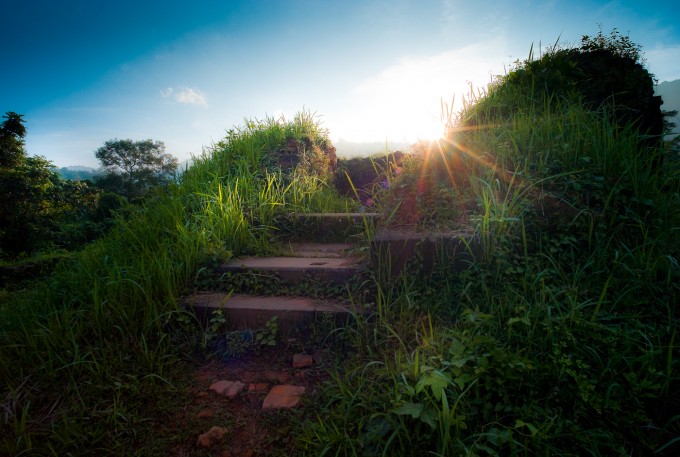
Leica M8: My Son sunrise # 2
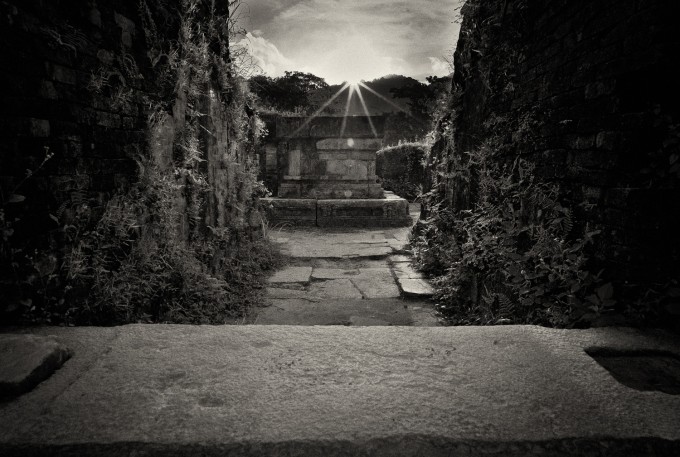
Leica M8: Headless relic
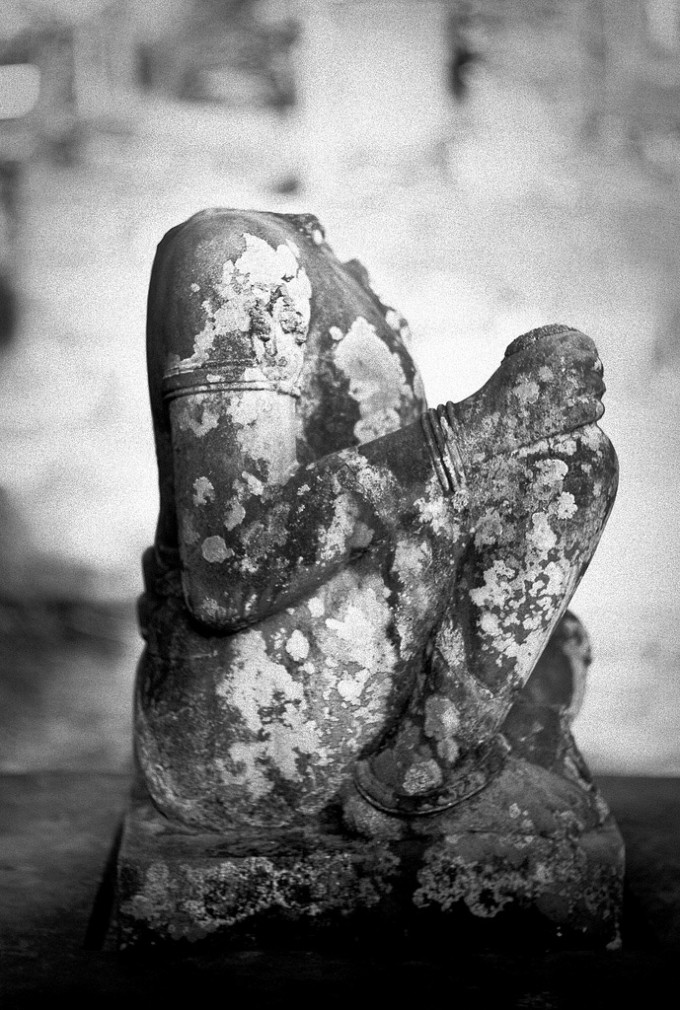
Day 8 – Beach Day Trip along the Vietnam Coast & China Beach
Next up on our foray was one of the favorite and most pleasant parts of our trip. We hired a driver who spoke some English to transport us north from Hoi An to Hue (a center of Vietnamese Imperial and Dynastic rule) over the course of a day. The trip was spent driving along coastal Vietnam, along China Beach. Many of these sites were areas of US Military Staging During the Vietnam War, and for some of you fan of 80’s TV, a show named “China Beach”, starring Dana Delaney, was shot to detail the stories that took place during that time.
Our experience traveling along Vietnam’s coast was wonderful and soothing. Our driver really helped with the experience. We arranged for travel through a Hoi An Travel and Booking agent only after we had arrived in the city, and spent $70 organizing the day long, transport. The great thing was that our driver knew all of the cool local spots to visit along the way. Our Lonely Planet did help us pick a few notable beaches along the way, but our driver was able to fill in the gaps. Along the way, we stopped at Marble Mountain, a giant rocky outcropping overseeing the city of Danang, about which a giant Pagoda was positioned for us to see. Also, we were whisked, a bit predictably, through a Marble dispensary full of many “souvenirs” for potential purchase. While there was some attention given to us, it wasn’t too bad, and we were able to take many pictures. I used the Leica M8 and D-Lux 4 in equal parts during this portion of the trip, capturing some of the beautiful details of this seaside region. We even visited some natural springs, only inhabited by locals who giggled at our Western Style Swimtrunks….we got along marvelously and they tolerated us and our Ugly American Tendencies.
Leica M8: Seaside fisherman, with storm arriving
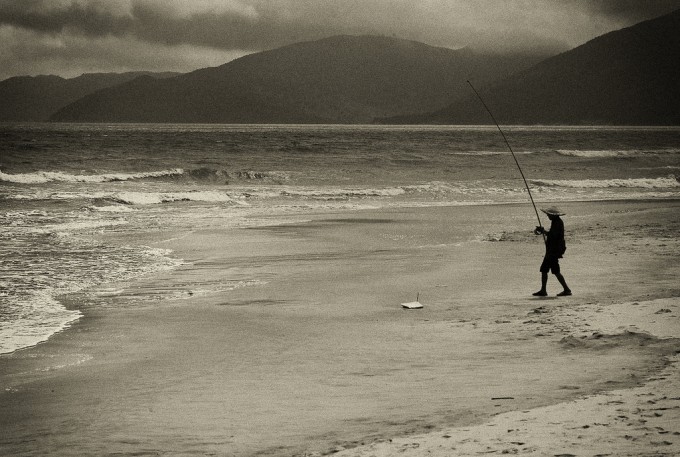
Leica M8: Military exercise
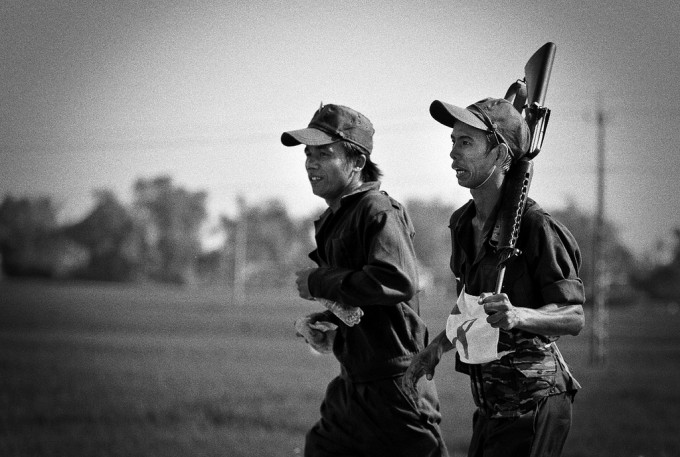
Day 8 – Hue Mausoleums
See Part 2 – click here for the conclusion!
Be sure to check out his flickr and blog!
Here’s a link Ashwins Flickr:
http://www.flickr.com/photos/ashwinrao1/
And here’s a link to his photo blog:
http://photos-ash.blogspot.com
[ad#Adsense Blog Sq Embed Image]

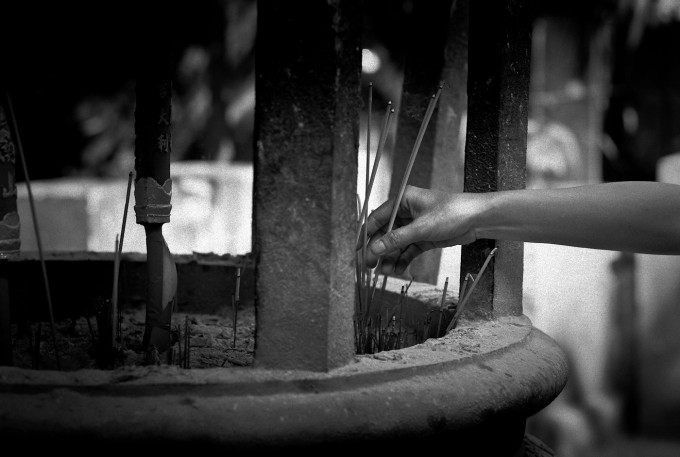
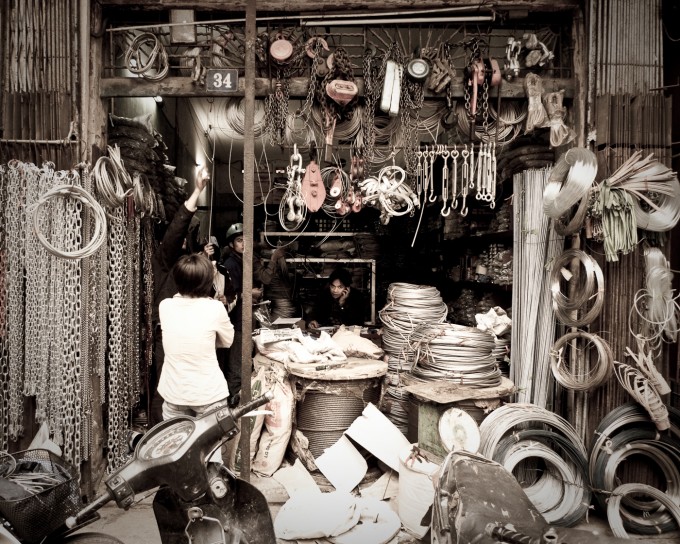
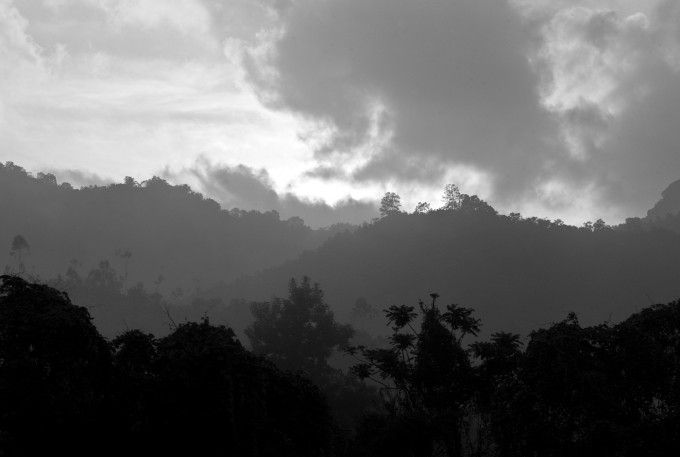
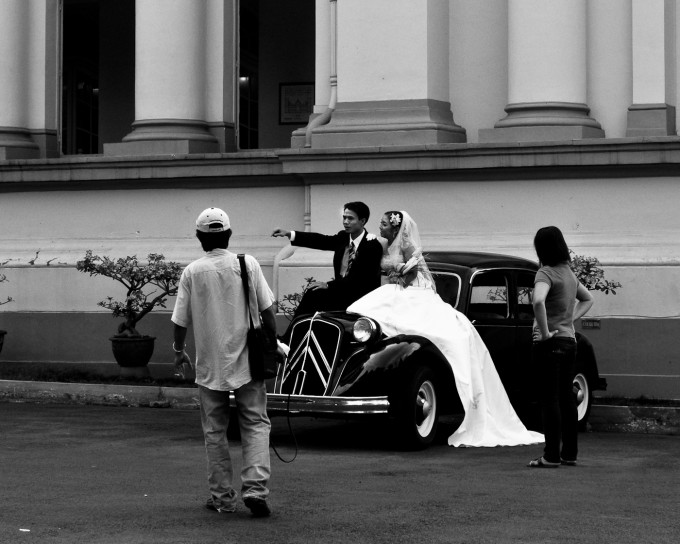
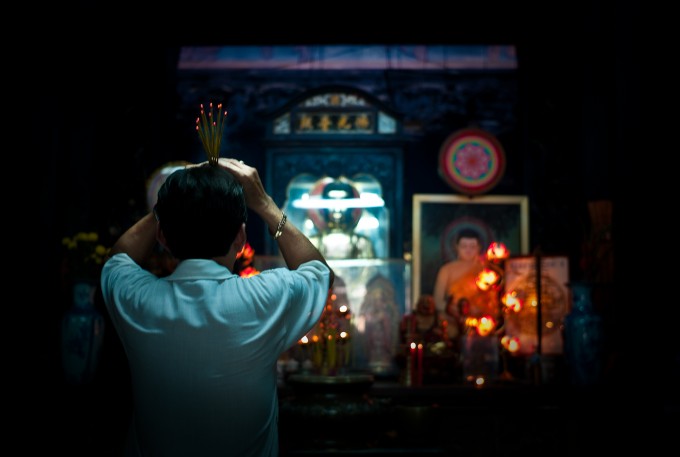
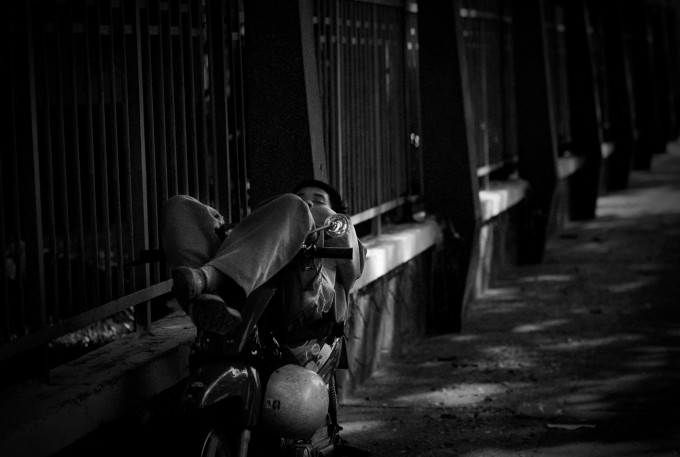
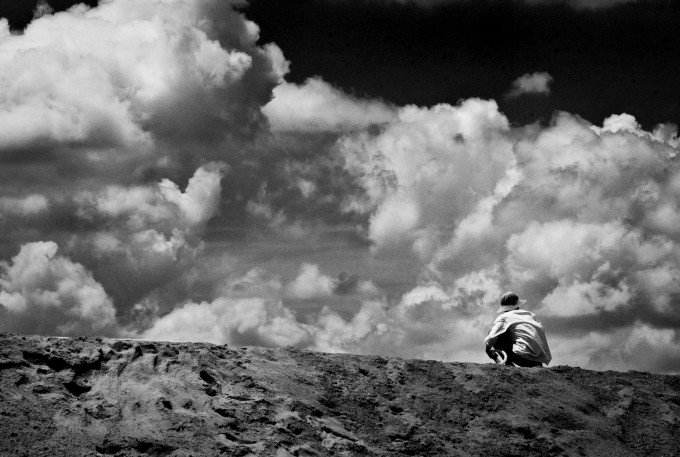
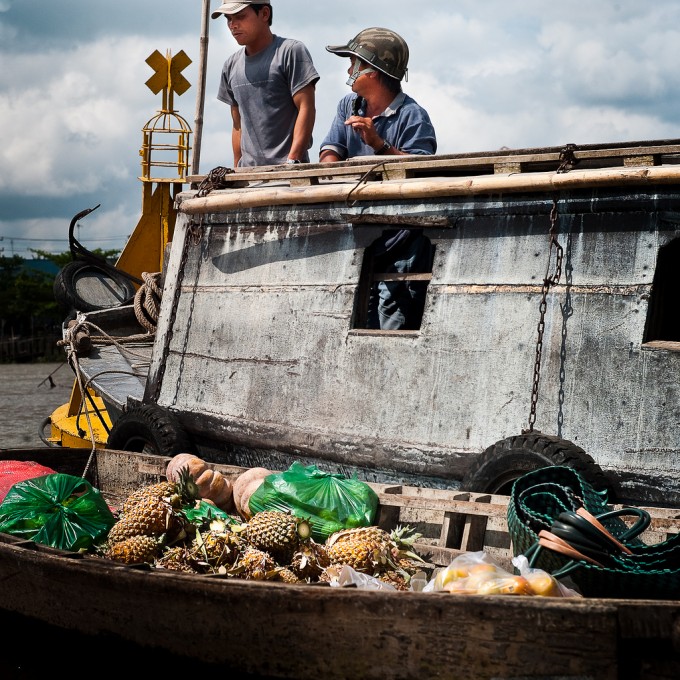
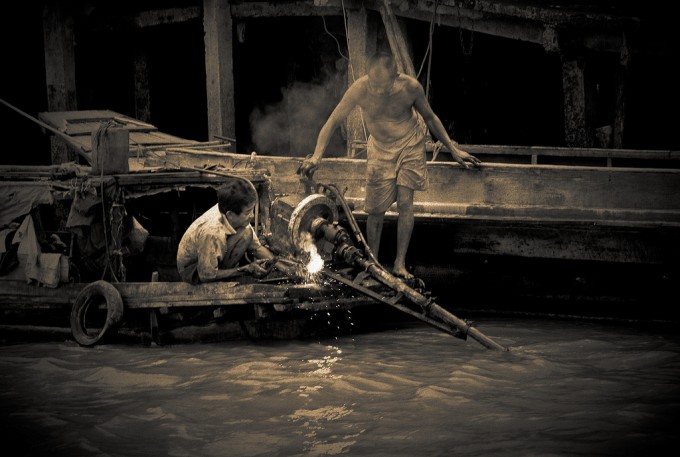
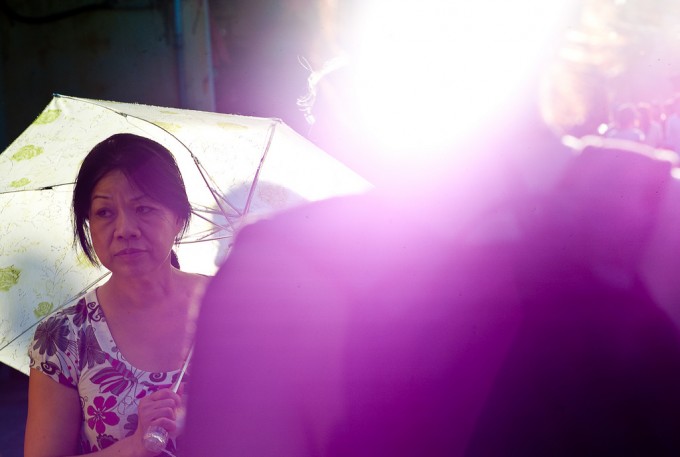
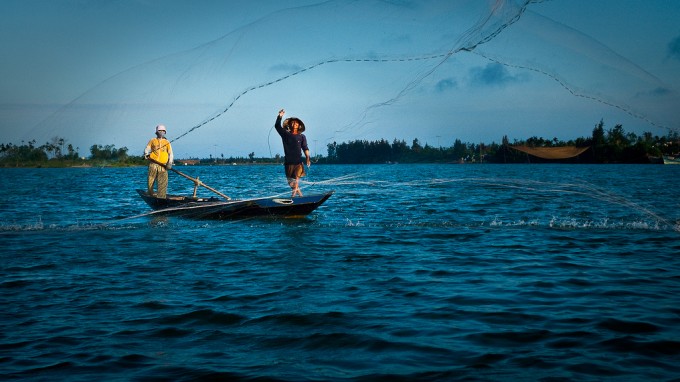
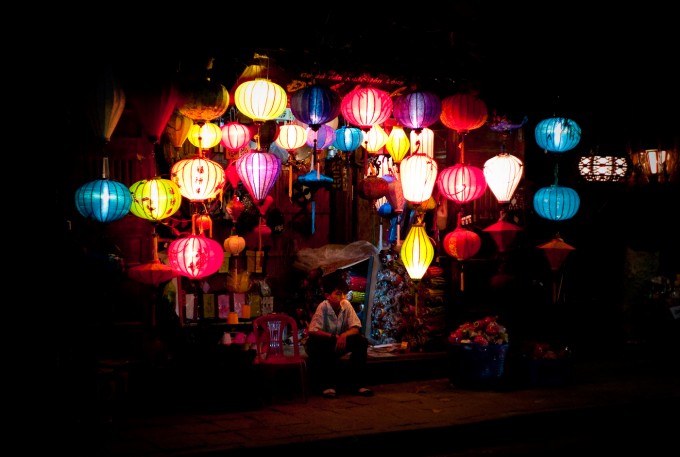

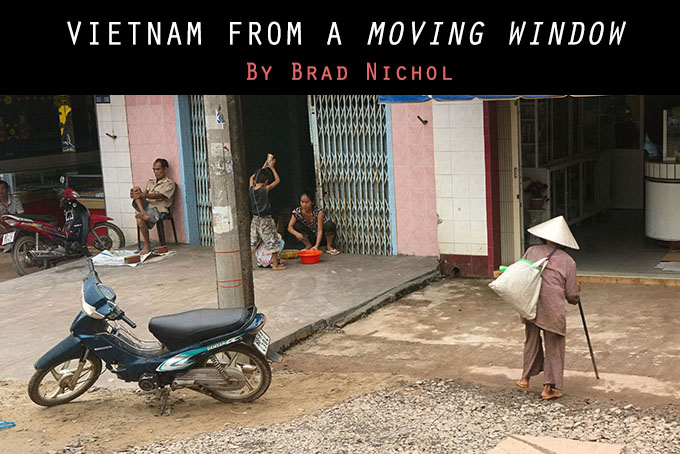

Great post with amazing pictures. Many tourists will get attracted by this post.
hi, i always like your pictorial sense in photography, pl when ever you are vsiting india, pl do email me, i wish to meet you , thanks vinod bajpai (vb_vmb)
Truly wonderful photos! I’m in awe
I once was in Vietnam, and I took pictures there as well. What a difference 50 years makes.
Hi Rakesh,
Yes, recently I took the 16-18-21, 35 lux, 50 lux, and 90 apo-cron to Egypt, all packed in the Billingham Pola Bag. It’s a great bag….compact and versatile!
Ashwin, great write-up and pictures. I have a question on your Pola bag. I recently purchase M9 so I have a question on your pola bag. Is it big enough to carry extra lenses like 90mm of yours along with M9? regards.
Ashwin,
Another fantastic article! Amazing photos and thanks for your vivid descriptions. I want to go visit Vietnam now! I’m not sure if you mentioned this before, but did you find that you had to change lenses quite a bit when using the M8 to get various shots? Or did you stick mainly with one lens?
Steve, thanks for sharing this on your website and looking forward to reading part 2.
Rex, I am psyched that you are heading there in August. It should be a great experience. Your kit sounds nice, and appropriate use for what you’ll be seeing!
I can’t wait to get to Vietnam in August, these wonderful photos and story really helped wet my appetite. I will be taking an Olympus E620 with 11-22 & 50-200 lens along with an EPl-1 micro 4/3 camera with the 14- 42.
Ashwin, you should work for Lonely Planet. Your pictures are wonderful. I love Lonely Planet! Have you ever tried to sell your work with them? Just this article here is interesting enough for a Lonely Planet book. Lonely Planet should have books like this where the traveler takes pictures and journals the visits to countries. Not so much a travel book in the traditional sense, but more of a travel journal. It would be quite sellable.
I can’t wait for your Leica Mp Vs the Leica M9 or even M8. I’d like to see all three. (I don’t have a M9, only the M8.2, so of course I want to see results with that camera as well.)
Steve, you deserve it. I can only imagine what magic you’d come up with in similar circumstances! Is Arizona coming up soon? Beautiful place to be!!!
Yep! Part 2 should be up Wed or Thursday! Thanks again Ashwin for this awesome journey through Vietnam with your gorgeous photos. Makes me want to do some serious traveling!
Steve
THanks again to Beau, Elaine, and Pete:
@ Beau: Funny that our trips echoed each other. My friend Andrea took some amazing captures with her G10, standing right beside me (her style is very different than mine,), but an amazing perspective. It’s funny how we all see the world in our own unique ways.
@ Elaine. Thanks! I have an MP loaded with Neopan 1600 at the moment, and I could do a comparison soon. May be something for a future article! Film vs Digital Leica….cool idea.
@ Pete: Hey there, PenPal! Once again, thanks so much for making your way through my photo stream. Check it out…got a few new pics for ya 😉 ! Glad it only took a month…hahah….Steve should be releasing part 2 in the next few days. It’s done, along with more pics!
Hello Ashwin: another wonderful post on Steve’s site. Thanks Steve for letting Ashwin do his thing.
Ashwin, your shots are just wonderful with so much life and a story behind each one. I have enjoyed going thru your what seems endless flickr photos and I am (after 1 month) almost done 🙂
Looking forward to your conclusion, thanks again…
Pete
Ashwin, another fine article with superb photographs! I look forward to the second part! I love the results from both cameras. I never owned a Leica film camera so don’t know about this contrasty issue. I like the darks that the digital Leica produces, but that’s me. I wonder what a side by aside comparison would show? Anyone out there able to conduct an experiment? Film Leica VS Digital Leica? LOL!
Thanks to Steve and Ashwin for sharing.
Great article! My wife and I took an almost identical route as yours through Vietnam on our around the world trip. Vietnam is a magical place to photograph… just watch out for the scooters:) Thanks for sharing, it’s great to see the places we were through another person’s lens.
Thanks guys:
@ Alex & Sdennis, thanks so much. I love writing for Steve’s site!
@ Lynn! Great to hear from you. I have been missing DPReview since my self-imposed exile (actually to work on articles like this). I would LOVE to see your shots from Saigon once they are ready for viewing. I hope all is well with you!
Ashwin, great article and photos, funny thing timing, in the last week I have been going through some 44 year old slides that I took in Saigon in 1966. The images are not of the quality of yours, and I see the city has changes from when I was there. I will send you a link when I get them posted to my site.
best, Lynn
Excellent…both images and words. Great job, Ashwin!
Awesome stuff Ashwin. Great pictures.
Thanks to you all for your kind words.
@Thanh, your country is very inspiring. A beautiful place!
@ Jerry_R: I think that analog experience is comparable to digital. I tend to use older, lower contrast lenses on my analog bodies (i.e. summilux 75), or films with more grey such as Ilford HP5 to capture shadow details
@Per: Oooh, Greenland, I’d love to come…someday soon? Next trip is to India!
@Stephanie: Thanks for the kind words
@ focusedone: Thanks. I wanted to do what you said, but since my lenses were not coded, there was not this info in the EXIF data…alas, I’d have to go on my recall, and can do so, if you wish.
@Lucy; Thank you. I may take Per up on that offer someday soon!
@ cidereye: Thanks for your kind words, as usual! More articles to come….
@ Derrick: Thanks as well. It took me some time to gather the right words. I wanted to offer a different perspective of camera use than I had read elsewhere. I thought that the travel journal approach would be helpful…
Ashwin, this was a superb article! The pictures are outstanding and inspiring, but I think it’s your narrative that I love the most. I can’t wait to go there myself.
Steve, keep these type of articles coming!
Thanks for you efforts yet again Ashwin, always interesting writing and great shots. Keep up the great work! 🙂
Per’s neck of the woods looks beautiful, i love his work, you guys should take him up on his offer!
Ashwin, lovely shots and writing as usual . thankyou.
Breathtaking images and another great guest article by Ashwin!
I like your take on the D-Lux 4/M8 combo. I do wish that the M8 photos indicated the lens used so we know how close you were to the subjects.
Thanks for sharing and I’ll be looking forward to Part 2!
Wonderful photographs, as always.
Beautiful images, Ashwin. When do you or Steve visit me heres in Greenland? 🙂
Thanks Ashwin for great story and pictures!!
I have a question to you. How you compare M8\9 results with M glass to analog bodies?
Don’t you feel that contrast is too large, with lots of “black” areas?
Cheers,
Jerry
Thanks Steve, those are really beautiful pictures. It’s good to see that pictures of my country inspired Leica photographers like Rao and you.